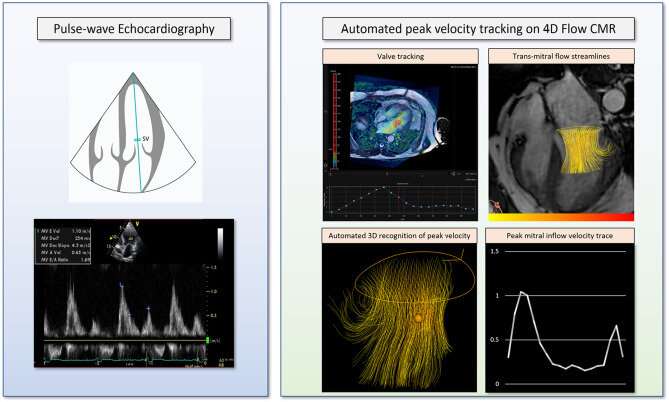Cutting-edge 4D flow MRI scans could revolutionize blood flow assessment in the heart

Researchers at the University of East Anglia have developed cutting-edge imaging technology to help doctors better diagnose and monitor patients with heart failure.
The state-of-the-art technology uses magnetic resonance imaging (MRI) to create detailed 4D flow images of the heart.
A new study published today shows how this non-invasive imaging technique can measure the peak velocity of blood flow in the heart accurately and precisely.
The 4D heart MRI scan takes just six to eight minutes and can provide precise imaging of the heart valves and the flow inside the heart in three-dimensions, helping doctors determine the best course of treatment for patients.
Cardiology patients at the Norfolk and Norwich University Hospital were the first to trial the new technology. And the team hope their work could revolutionize how heart failure is diagnosed.
Lead researcher Dr. Pankaj Garg, from UEA's Norwich Medical School, said: "Heart failure is a dreadful condition resulting from rising pressures inside the heart. The best method to diagnose heart failure is by invasive assessment, which is not preferred as it has risks. An ultrasound scan of the heart called echocardiography is routinely used to measure the peak velocity of blood flow through the mitral valve of the heart. However, ultrasound assessment is dependent on the operator and can be unreliable.
"In our study, we used one of the most cutting-edge methods of flow assessment inside the heart called 4D flow MRI. In 4D flow MRI, we can look at the flow in three directions over time—the fourth dimension.
"We applied automated methods to hunt for the peak velocity in the chamber of the heart and showed that it is similar to echocardiography assessment, but with much greater precision."
The team tested the new technology with 50 patients at the Norfolk and Norwich University Hospital and at the Sheffield Teaching Hospitals NHS Foundation Trust in Sheffield.
Patients with suspected heart failure were assessed using both echocardiography and the new advanced 4D flow heart MRI.
The team collaborated with industry partner Pie Medical Imaging from the Netherlands to develop prototype software to automate the process of measuring the peak velocity of blood flow inside the heart.
Dr. Garg said: "This work is very important because the heart's inability to relax leads to a rise in pressures inside the heart, and this causes heart failure with preserved ejection fraction.
"Peak velocity of the blood flow inside the heart is a very important assessment for patients, and our findings show that by using a state-of-the-art 4D flow MRI imaging, we can do this accurately and with a high degree of repeatability.
"This advanced imaging offers an alternative to ultrasound methods and may even be better than ultrasound in the future."
NNUH Medical Director Prof Erika Denton, said: "NNUH is proud to have taken part in ground-breaking research which has the potential to improve the diagnosis and treatment of people with heart disease."
"Validation of Time-Resolved, Automated Peak Trans-mitral Velocity Tracking: Two center Four-Dimensional Flow Cardiovascular Magnetic Resonance Study" is published in the journal International Journal of Cardiology on June 27, 2022.
More information: Paul Njoku et al, Validation of time-resolved, automated peak trans-mitral velocity tracking: Two center four-dimensional flow cardiovascular magnetic resonance study, International Journal of Cardiology (2022). DOI: 10.1016/j.ijcard.2022.06.032





















